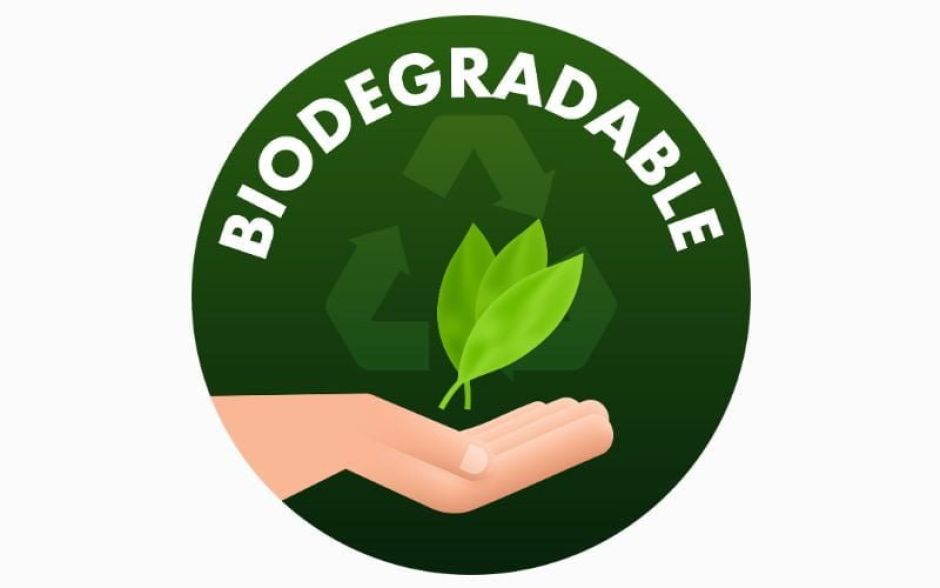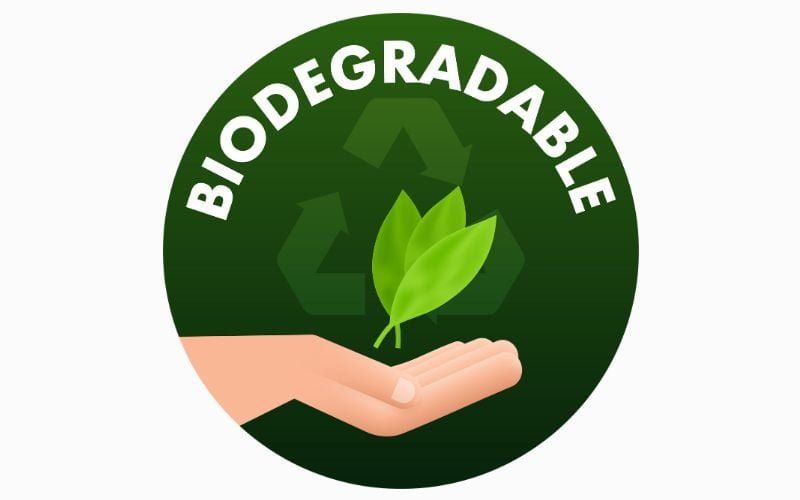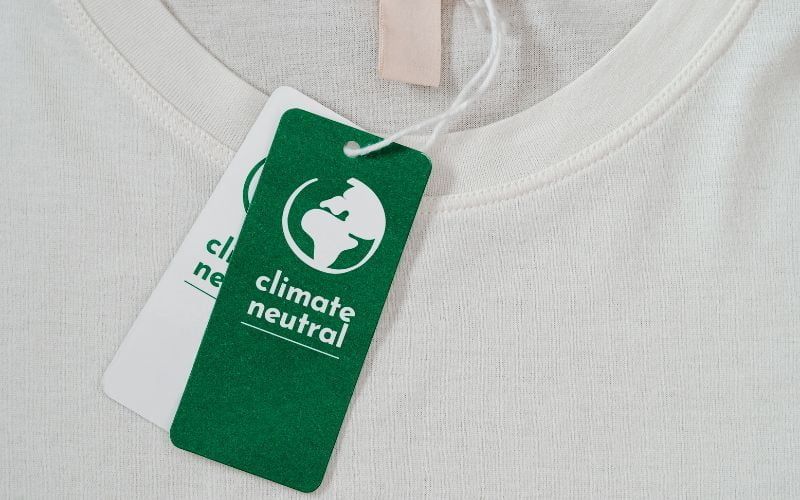
Biodegradable Products: Eco-Friendly Super Solutions for a Sustainable Future 2023
In an era of growing environmental awareness, Biodegradable Products have emerged as a beacon of hope in the quest for a more sustainable world. As a crucial sub-category of Eco-Friendly Gear, these products epitomize the principles of environmental responsibility and conscious consumption.
This comprehensive guide delves deep into the realm of Biodegradable Products, exploring their significance in reducing the burden of non-biodegradable waste, understanding their environmental impact, and presenting a wide array of options available for eco-conscious consumers. Whether you’re an advocate for sustainability, an outdoor enthusiast, or simply someone seeking greener alternatives, this guide serves as your gateway to embracing Biodegradable Products as a viable and ethical choice.

Table of Contents
The Significance of Biodegradable Products
The significance of Biodegradable Products extends far beyond their convenience and functionality. These eco-conscious alternatives play a pivotal role in addressing pressing environmental issues and promoting a sustainable future. Here’s an extended exploration of why biodegradable products are a crucial component of our journey towards a cleaner and more environmentally responsible world:
1. Reduced Environmental Impact:

- Biodegradability: At the core of their significance is the property of biodegradability. Biodegradable products are designed to break down naturally into non-toxic components, leaving no lasting waste. This natural decomposition reduces the burden of long-lasting, non-degradable waste in landfills, minimizing their environmental impact.
- Resource Efficiency: Many biodegradable materials are sourced from renewable resources like plant-based plastics or agricultural waste. These materials typically require fewer resources, such as energy and water, during production compared to conventional plastics, contributing to resource efficiency and reduced environmental strain.
2. Conservation of Ecosystems:
- Wildlife Preservation: The adoption of biodegradable products can help protect wildlife and ecosystems. Traditional plastics often find their way into natural environments, leading to ingestion and entanglement hazards for wildlife. By reducing plastic pollution, biodegradable alternatives contribute to the preservation of natural habitats and species.
3. Soil Enrichment:
- Nutrient Contribution: As biodegradable materials decompose, they release valuable nutrients into the soil. This nutrient contribution enhances soil fertility, promoting healthier plant growth and agricultural practices. It’s a natural way of enriching the earth without resorting to chemical fertilizers.
4. Reduced Greenhouse Gas Emissions:
- Less Methane Production: In landfills, organic waste, including biodegradable materials, decomposes anaerobically, producing methane—a potent greenhouse gas. Biodegradable products, by breaking down more efficiently, can help reduce methane emissions from landfills, contributing to climate change mitigation efforts.
5. Circular Economy:
- Closed-Loop Systems: Biodegradable products can be integrated into circular economy models, where materials are reused, recycled, or composted efficiently. This aligns with the principles of sustainability, resource conservation, and reduced waste generation.

6. Positive Consumer Choices:
- Environmental Responsibility: Choosing biodegradable products empowers individuals to make environmentally responsible choices in their daily lives. It signifies a commitment to reducing one’s ecological footprint and making more sustainable purchasing decisions.
7. Innovation and Research:
- Green Technology: The demand for biodegradable products has fueled innovation in green technology and materials science. Researchers and businesses are continually exploring new materials and processes that enhance the performance and sustainability of these products.
- Market Transformation: The adoption of biodegradable products has the potential to transform markets and industries. As consumer preferences shift towards eco-friendly options, businesses are incentivized to develop and offer more sustainable choices.
8. Global Environmental Awareness:
- Catalyst for Change: Biodegradable products serve as a catalyst for global environmental awareness. They highlight the need for more responsible consumption and production patterns, encouraging individuals, communities, and governments to take action against environmental degradation.
In a world facing mounting environmental challenges, the significance of biodegradable products cannot be overstated. They represent a practical and tangible solution for reducing waste, conserving natural resources, and mitigating the negative impacts of plastic pollution on ecosystems and climate. By embracing biodegradable alternatives in our daily lives and supporting their continued development, we contribute to a more sustainable and resilient planet—one that future generations can thrive in.
Types of Biodegradable Products
The world of Biodegradable Products encompasses a diverse range of categories, each offering eco-conscious alternatives to conventional items. These products are designed with sustainability in mind and serve as a testament to the innovative solutions available for environmentally aware consumers. Let’s explore the various types of biodegradable products, each making a unique contribution to reducing our environmental footprint:

1. Biodegradable Packaging:
- Eco-Friendly Wrappers: Biodegradable packaging materials have gained prominence as sustainable alternatives to traditional plastics. These materials, often derived from sources like cornstarch or sugarcane, are used for food packaging, shipping materials, and more.
- Compostable Bags: Compostable bags made from biodegradable materials offer a convenient and eco-friendly option for shopping and carrying goods. They break down naturally in composting systems.
2. Biodegradable Tableware:
- Compostable Cutlery: Cutlery and tableware made from biodegradable materials, such as bamboo or wheat straw, provide sustainable alternatives to single-use plastic utensils. These products are ideal for picnics, events, and takeout meals.
- Disposable Plates: Biodegradable disposable plates are crafted from materials like palm leaves, sugarcane, or bagasse. They offer a compostable alternative to traditional paper or plastic plates.
3. Biodegradable Bags:
- Shopping Bags: Biodegradable shopping bags, often made from materials like PLA (polylactic acid), offer a practical solution to reducing plastic waste. They are sturdy and environmentally friendly.
- Trash Bags: Biodegradable trash bags are designed to decompose naturally in landfills, reducing the long-term environmental impact of waste disposal.

4. Biodegradable Cleaning Products:
- Eco-Friendly Cleaners: Biodegradable cleaning solutions and detergents are formulated to break down harmlessly in the environment. They are free from harsh chemicals and synthetic additives, promoting safer and greener cleaning practices.
- Biodegradable Wipes: Household cleaning wipes and personal care wipes made from biodegradable materials provide a sustainable alternative to traditional disposable wipes.
5. Biodegradable Personal Care Products:
- Toothbrushes: Biodegradable toothbrushes crafted from materials like bamboo offer an eco-friendly choice for oral care. They are durable, functional, and biodegrade naturally.
- Sanitary Products: Eco-friendly sanitary pads and tampons made from biodegradable materials, such as organic cotton or bamboo fiber, are gentle on the environment and a healthier option for personal hygiene.
6. Biodegradable Disposable Diapers:
- Eco-Friendly Diapers: Biodegradable disposable diapers are designed for infants and toddlers, offering a sustainable alternative to traditional diapers. They are made from biodegradable materials that break down more readily in landfills.
7. Biodegradable Plant Pots:
- Gardening Containers: Biodegradable plant pots, often made from coconut coir, peat, or wood pulp, are an eco-conscious choice for starting seeds or transplanting seedlings. These pots can be planted directly into the soil, reducing transplant shock.
8. Biodegradable Fishing Gear:
- Fishing Lines: Biodegradable fishing lines, constructed from materials like monofilament, decompose in aquatic environments, reducing the risk of entanglement for marine life.
- Fishing Baits: Biodegradable fishing baits made from natural materials minimize the ecological impact of fishing activities.
9. Biodegradable Pet Products:
- Pet Waste Bags: Biodegradable pet waste bags provide a responsible way to clean up after pets. They decompose naturally in landfills and composting systems.
- Cat Litter: Biodegradable cat litters are often made from materials like pine, wheat, or corn and offer a more sustainable option for pet owners.
10. Biodegradable Toys and Novelties:
- Children’s Toys: Biodegradable toys made from eco-friendly materials provide safe and sustainable play options for children.
- Party Decorations: Biodegradable party decorations, such as balloons and confetti, are designed to break down naturally, reducing post-event cleanup.
The diverse array of Biodegradable Products demonstrates the versatility and innovation in sustainable solutions. From everyday essentials like packaging and tableware to personal care and pet products, these alternatives empower consumers to make environmentally responsible choices. Embracing biodegradable products not only reduces plastic waste but also contributes to a more sustainable future for our planet and future generations.
Benefits of Biodegradable Products
The adoption of Biodegradable Products offers a multitude of benefits that extend well beyond the individual consumer. These products play a pivotal role in promoting sustainability and reducing the ecological footprint. Here’s an in-depth exploration of the wide-ranging advantages associated with biodegradable alternatives:
1. Reduced Environmental Footprint:
- Lower Carbon Emissions: Biodegradable products typically have a lower carbon footprint throughout their life cycle compared to conventional counterparts. From manufacturing to disposal, they often involve less energy consumption and greenhouse gas emissions.
- Resource Efficiency: Many biodegradable materials are derived from renewable resources, reducing the strain on finite resources like fossil fuels and minerals. This contributes to the conservation of natural ecosystems.
2. Minimal Plastic Pollution:
- Less Plastic Waste: Biodegradable products are designed to break down naturally over time, significantly reducing the persistence of plastic waste in the environment. This helps prevent plastic pollution in oceans, rivers, and terrestrial ecosystems.
- Wildlife Protection: The reduction in plastic waste benefits wildlife by decreasing the chances of ingestion and entanglement in plastic debris. This protection extends to marine life, birds, and terrestrial animals.
3. Sustainable Resource Usage:
- Renewable Materials: Biodegradable products often utilize materials such as bamboo, sugarcane, cornstarch, and hemp, which are renewable and grow rapidly. This reduces the demand for non-renewable resources.
- Reduced Dependence on Fossil Fuels: Conventional plastics are derived from petroleum-based sources. By opting for biodegradable alternatives, consumers contribute to reducing the dependence on fossil fuels, which is essential for combating climate change.
4. Biodegradability in Natural Environments:
- Efficient Decomposition: Biodegradable products break down into natural components, such as water, carbon dioxide, and organic matter, when exposed to environmental conditions. This decomposition leaves no long-lasting waste, allowing ecosystems to recover and regenerate.
- Soil Enrichment: As biodegradable materials decompose, they enrich the soil with essential nutrients, improving its fertility and supporting healthier plant growth. This positive impact on soil quality can enhance agricultural practices.
5. Consumer Choice:
- Empowerment: The availability of biodegradable products empowers consumers to make eco-conscious choices in their daily lives. By choosing these alternatives, individuals actively contribute to reducing their environmental impact and promoting a more sustainable future.
6. Economic Opportunities:
- Green Innovation: The growing demand for biodegradable products has spurred innovation and investment in green technologies and manufacturing processes. This fosters economic opportunities in industries focused on sustainability.
- Job Creation: The development, production, and distribution of biodegradable products create job opportunities within the sustainable goods sector, contributing to economic growth.
7. Positive Influence:
- Awareness and Education: The adoption of biodegradable products encourages awareness and education about environmental issues. It serves as a practical example of how individual choices can positively impact the planet.
- Collective Action: By collectively embracing biodegradable alternatives, communities and societies send a strong message to industries and policymakers, advocating for more sustainable practices and regulations.
Incorporating Biodegradable Products into daily routines represents a proactive step toward reducing our environmental impact and embracing a more sustainable way of life. These products offer tangible benefits not only for individuals but also for ecosystems, wildlife, and the global environment. As the demand for eco-friendly alternatives continues to grow, the positive influence of biodegradable products on the planet becomes increasingly significant, contributing to a future where sustainability is at the forefront of consumer choices.
Choosing the Right Biodegradable Products
Selecting the most suitable Biodegradable Products requires thoughtful consideration to ensure that your choices align with your sustainability goals and lifestyle. Here’s an extended guide to help you make informed decisions:
1. Product Type:
- Identify Needs: Begin by identifying which products in your daily life can be replaced with biodegradable alternatives. Consider items such as packaging, tableware, bags, cleaning products, personal care items, and more. Prioritize the products that have the most significant environmental impact or are frequently used.
- Usage Frequency: Assess how often you use these products. Some biodegradable alternatives may be more cost-effective or practical for items you use daily, while others may be suitable for occasional use.
2. Material Composition:
- Check Ingredients: When evaluating biodegradable products, delve into the materials used in their composition. Look for products that use materials like bamboo, sugarcane, cornstarch, or hemp, as these are known for their biodegradability and sustainability. Ensure that the materials are sourced responsibly to minimize the environmental impact of production.
- Certifications: Seek products that carry certifications from recognized eco-labels and organizations. Certifications such as the Biodegradable Products Institute (BPI) certification or the USDA Organic label can provide assurance that the product meets specific environmental and biodegradability standards.
3. Disposal Method:
- Composting: Consider the disposal method for the biodegradable product. Some products can be composted at home in your backyard compost bin, while others may require access to industrial composting facilities. Check the product’s packaging or instructions to determine the recommended disposal method.
- Compatibility: Ensure that the product’s disposal method aligns with your lifestyle and available resources. If you plan to compost at home, choose products that can be safely composted in a domestic composting system.
4. Environmental Impact:
- Life Cycle Assessment: Conduct research to understand the product’s overall environmental impact. Consider factors such as the carbon footprint associated with production, transportation, and disposal. Look for products with a low environmental footprint, as these contribute less to climate change and resource depletion.
- Comparative Analysis: Compare different brands and products within the same category to determine which one has a more favorable environmental profile. Consider factors like energy usage, water consumption, and emissions during the manufacturing process.
5. User Reviews and Ratings:
- Feedback: Take advantage of user reviews and ratings to gain insights into the real-world performance and quality of the biodegradable product. Reviews can provide valuable information about durability, effectiveness, and user satisfaction.
- Consider Multiple Sources: Look for reviews on various platforms and websites to gather a balanced perspective. Pay attention to reviews from users who share similar sustainability goals or usage patterns.
6. Brand Reputation:
- Reputable Brands: Opt for products from reputable brands that are committed to sustainability, transparency, and ethical practices. Research the brand’s history, mission, and environmental initiatives. Reputable brands often provide clear information about their supply chain, sourcing practices, and sustainability goals.
- Customer Support: Consider the level of customer support and information provided by the brand. Brands that offer educational resources, FAQs, and responsive customer service can enhance your overall experience and ensure you make informed choices.
By following this extended guide, you can confidently navigate the world of Biodegradable Products and select those that best align with your values, needs, and sustainability objectives. Making conscious choices about the products you use daily is a powerful way to contribute to a more eco-friendly and sustainable future.
Conclusion – Biodegradable Products
In conclusion, the adoption of Biodegradable Products is not merely a choice but a conscious commitment to a more sustainable and environmentally responsible way of life. These products, designed with nature in mind, offer a multitude of benefits that extend from individual consumers to the global environment.
By choosing biodegradable alternatives, we reduce our environmental impact, minimize plastic pollution, and contribute to the conservation of precious ecosystems and wildlife. Biodegradable products also play a vital role in resource efficiency, as they often rely on renewable materials that require fewer resources during production.
The significance of biodegradable products goes beyond their immediate convenience; they represent a shift towards a circular economy, where materials are reused, recycled, or composted efficiently, reducing waste generation. This shift not only conserves resources but also lessens the emission of greenhouse gases like methane, thus aiding in the fight against climate change.
Moreover, embracing biodegradable products signifies environmental responsibility. It empowers individuals to make choices that align with their values, reduce their ecological footprint, and contribute to a more sustainable future. As consumer demand for sustainable options continues to rise, it drives innovation, research, and market transformation, creating a positive feedback loop that benefits both people and the planet.
In a world where environmental awareness and action are paramount, biodegradable products serve as a catalyst for positive change. They inspire global environmental consciousness, urging us to rethink our consumption patterns and advocate for more responsible production practices.
As we move forward, let us recognize the significance of biodegradable products and their potential to reshape industries, protect ecosystems, and reduce our impact on the planet. By making informed choices and supporting the continued development and adoption of biodegradable alternatives, we take meaningful steps toward a cleaner, greener, and more sustainable world—one that we can proudly pass on to future generations.



